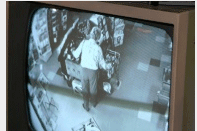There is truly no profile of a shoplifter. Men and women shoplift as equally, and juveniles made up 25% of the shoplifting around this country. The other 75% of shoplifters comprised the men and women and the senior citizens as well. Shoplifting is a crime, so why do senior citizens do it? There are many reason and many studies why people shoplift, and in the case of the senior citizens those reason are many.
To read more about this topic follow the links below for more information.
Local 4 Defenders: senior citizen serial shoplifter
The Defenders investigate the case of a repeat-offender senior citizen shoplifter, and why she might have a good reason for doing it.
We Help People Who Have
Nowhere Else To Turn
If you are dealing with a shoplifting issue or are seeking to understand why you shoplifted and are looking for confidential help and support to overcome the problem, you’ve come to the right place.
“For 45 years, I work hard, provided for my family and raised my children with good values. Then I retired. Suddenly, my life lacked purpose. The man I was just didn’t exist anymore. Why does filling my pockets with items from the food store fill the empty space? Its wrong and goes against everything I believe in but the pull to do it is so strong. If my wife were alive, she’d be so ashamed of me” Hank
Shoplifting becomes an increasingly difficult problem for Japanese officers
According to Japan’s National Police Agency, the number of shoplifting cases on record has been at a steady high for the past 10 years or so. In 2012 there were a total of 135,000 documented cases nation-wide. Granted, Japan’s crime rate is less than one-fourth that of the United States according to some sources, but it still ranks in as having the sixth highest crime rate in the world. For shoplifting in particular, the problem appears to lie less with the will of the law enforcement and more with the attitudes of society. Many individuals will become angry and defensive on behalf of the thieving criminals, as though having beat the shop’s security system makes it acceptable to have stolen something in the first place! This has caused quite a few problems for security officials.
One example of small-scale theft comes from a certain large-scale shopping center in Japan. People take carts containing rice or liquor out into the parking lot under the guise of having forgotten their wallets in the car.








